Company Background
Roanoke Land & Improvement Company was organized by Clark & Company in July 1881 for the purpose of acquiring land, laying out streets, erecting houses, and building and equipping a hotel at the junction of the N&W and Shenandoah Valley Railroads. Frederick Kimball, president of the N&W Railroad, also served as a charter member of the Roanoke Land & Improvement Company.
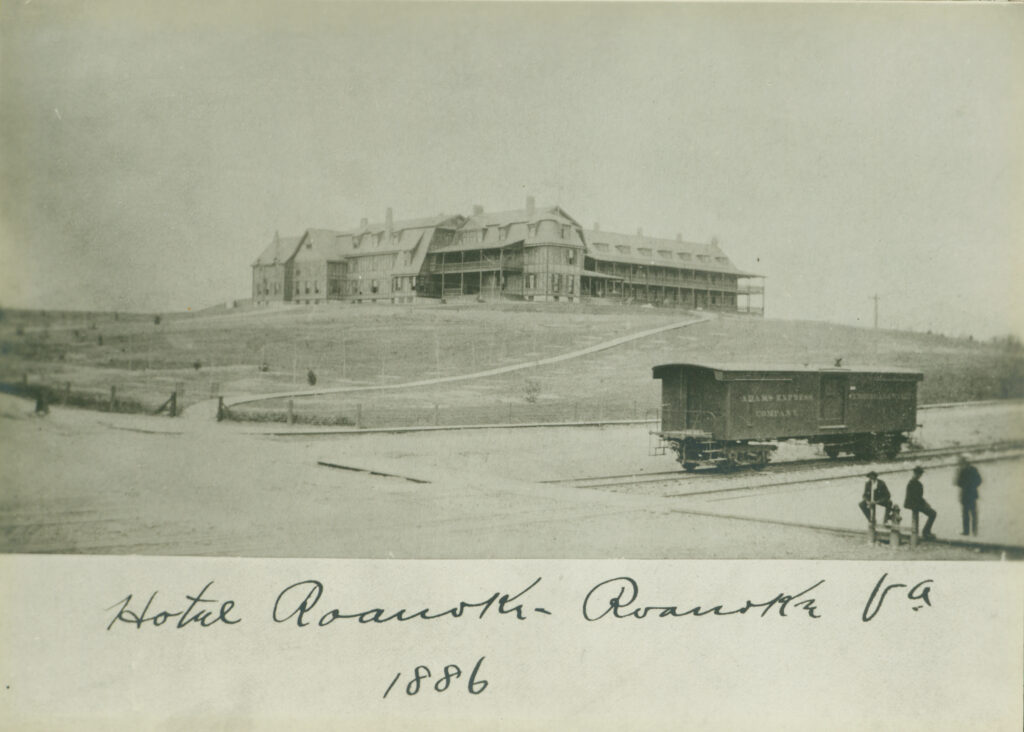
The company charter authorized $20,000 for building and furnishing a hotel and another $46,000 for operation of gas and water works, land purchase, and house construction. Within a year of its incorporation, the company had surveyed and platted town lots and arranged for construction of 85 dwellings averaging $1,250 in value. In addition, they had constructed Hotel Roanoke on 7.5 acres and acquired additional industrial lands and buildings totaling approximately 125 acres.
Gainsboro was one of the first neighborhoods in which The Roanoke Land & Improvement Company constructed houses for the anticipated employees of the railroad. Six cottages were constructed for railroad officials on Wells Avenue on the back side of the hotel. Rows of similar houses were constructed north of the railroad tracks in Gainsboro and Northeast Roanoke for workers. In 1882 alone, it was reported that the company built 128 frame and brick dwellings in the area.
Simple, two-story homes were constructed by independent contractors using architectural specifications and plans developed for the Roanoke Land & Improvement Company.
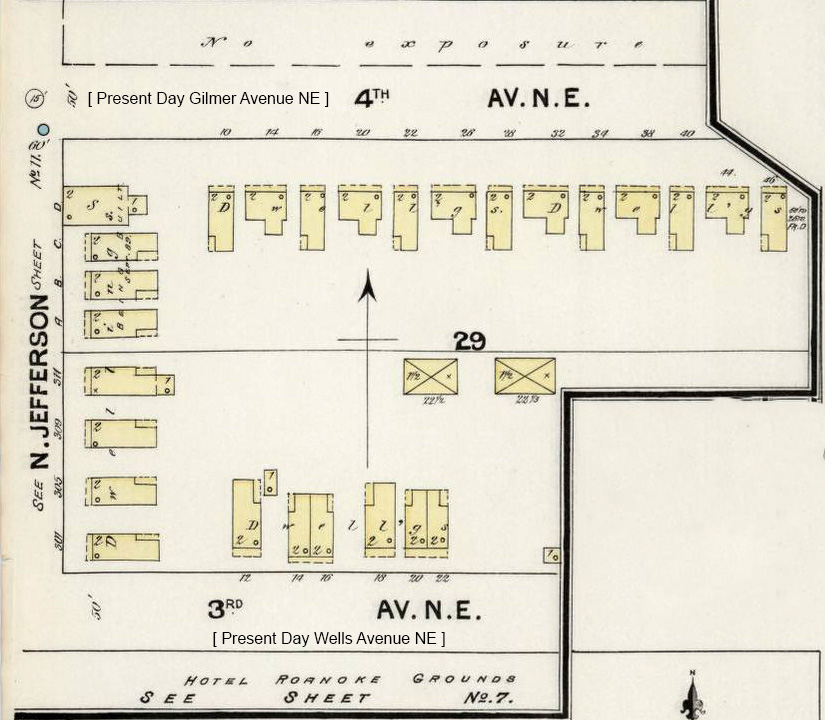
Existing Railroad Houses
The first block of Gilmer Avenue, NE, exhibits some of the best examples of the simple architectural construction forms in the late 1880s.

Every other house in the first block of Gilmer Avenue, NE, has a front-gable roof with a simple bargeboard (exposed board) detail in the gable end.
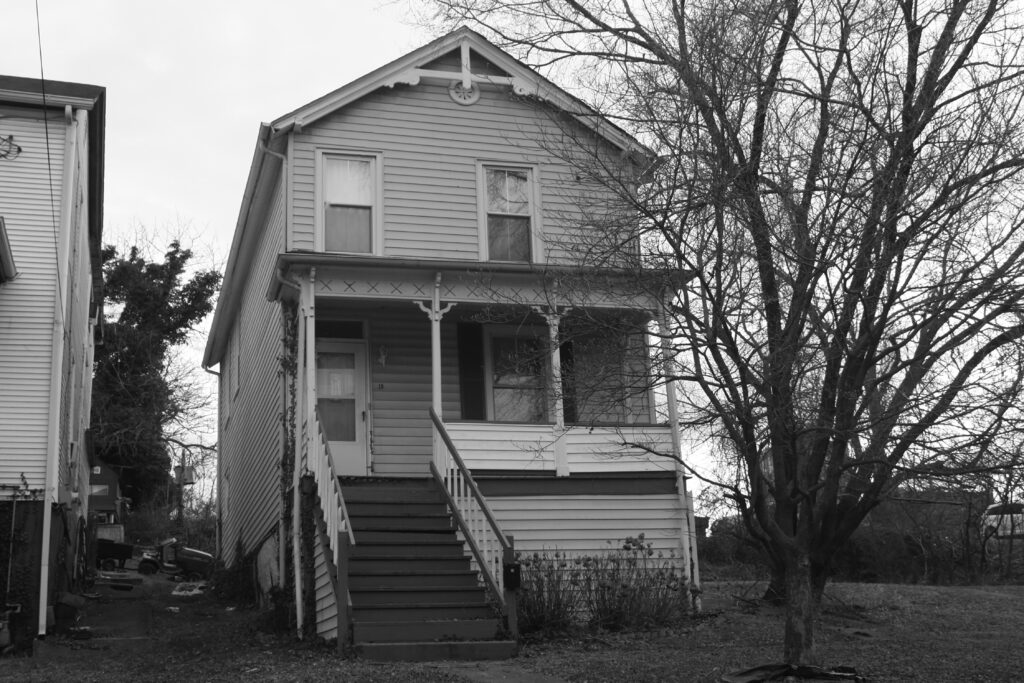
Alternating with this style of home are houses exhibiting a side-gable roof with a central peak.
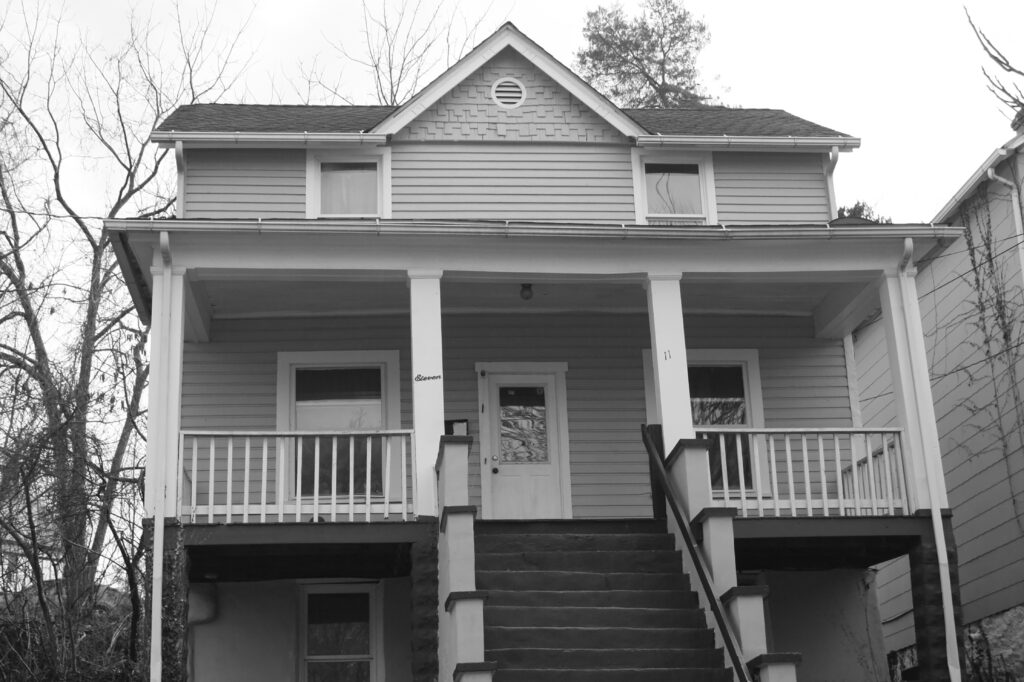
The south side of Gilmer Avenue, NW, developed in the late 1880s and 1890s, has examples of the predominantly two-story front-gable form houses. The lots are more narrow than those on the northeast end of the street and the houses are modest in design with unembellished gable fronts.
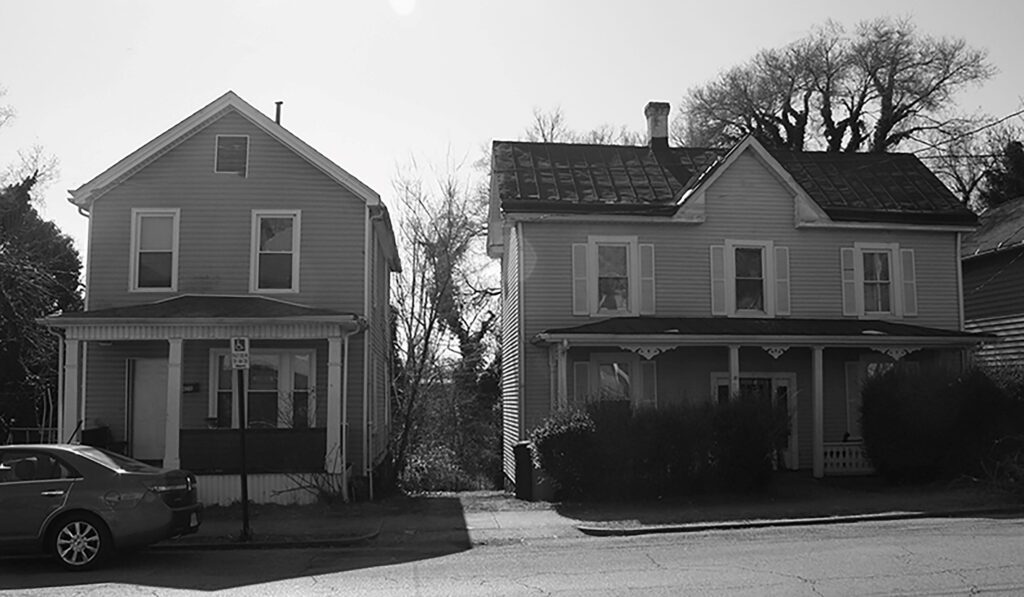
The Roanoke Land & Improvement Company also facilitated the development of St. Andrews Catholic Church on the hill above Gainsboro. Many of the Northerners who came to Roanoke to work for the railroads were Catholic. In 1882, they organized a committee to build a new church. Mr. J. B. Austin, president of the development company, offered to donate land to the Roman Catholic Bishop of Virginia for the new church. The deed for the property was executed in July 1883, in exchange for one dollar in cash. A small red brick church was completed by September 1883.
Sources
Blanton, A. (2005). Gainsboro Historic District. National Register of Historic Places, Final Nomination. Virginia Department of Historic Resources. No. 128-5762.
Blanton, A. (2002). Roanoke Downtown District. National Register of Historic Places, Final Nomination. Virginia Department of Historic Resources. No. 128-5761
Cochener, Margaret Maier. (1989). On the Hill, St. Andrew’s Parish, Roanoke, Virginia. A History of St. Andrew’s Parish November 1882-August 1989. Roanoke, VA.
Dotson, R. (2007). Roanoke, Virginia, 1882-1912: Magic City of the New South (1st ed.). University of Tennessee Press.
Jack, G. S., & Jacobs, E. B. (1912). History of Roanoke County. Stone Printing.
White, Clare.(1982). Roanoke 1740-1982. Roanoke Valley Historical Society. Hickory Printing.
Vosmick, Julie. (1995). Hotel Roanoke. National Register of Historic Places, Final Nomination.Virginia Department of Historic Resources. No. 128-0025.
